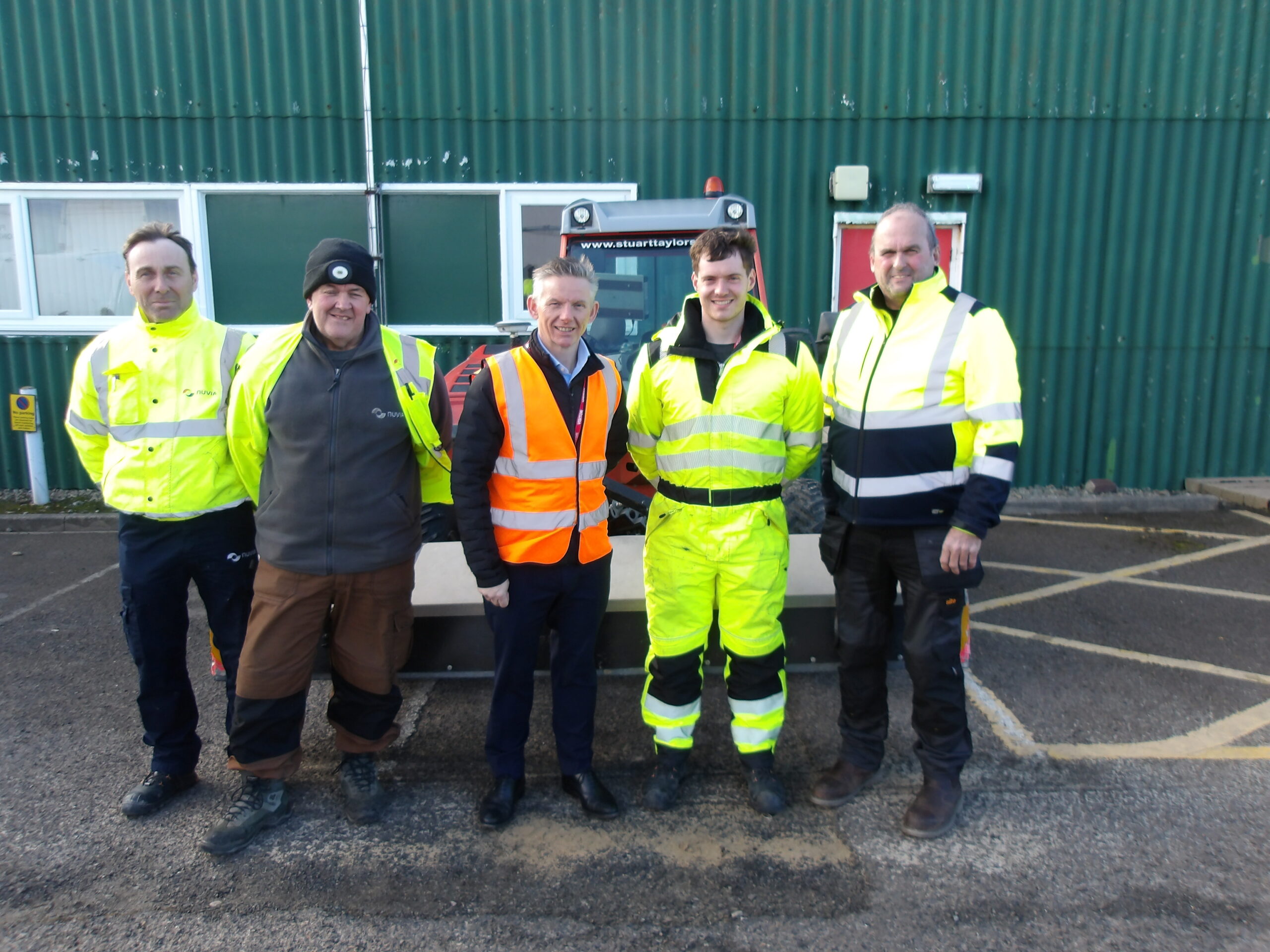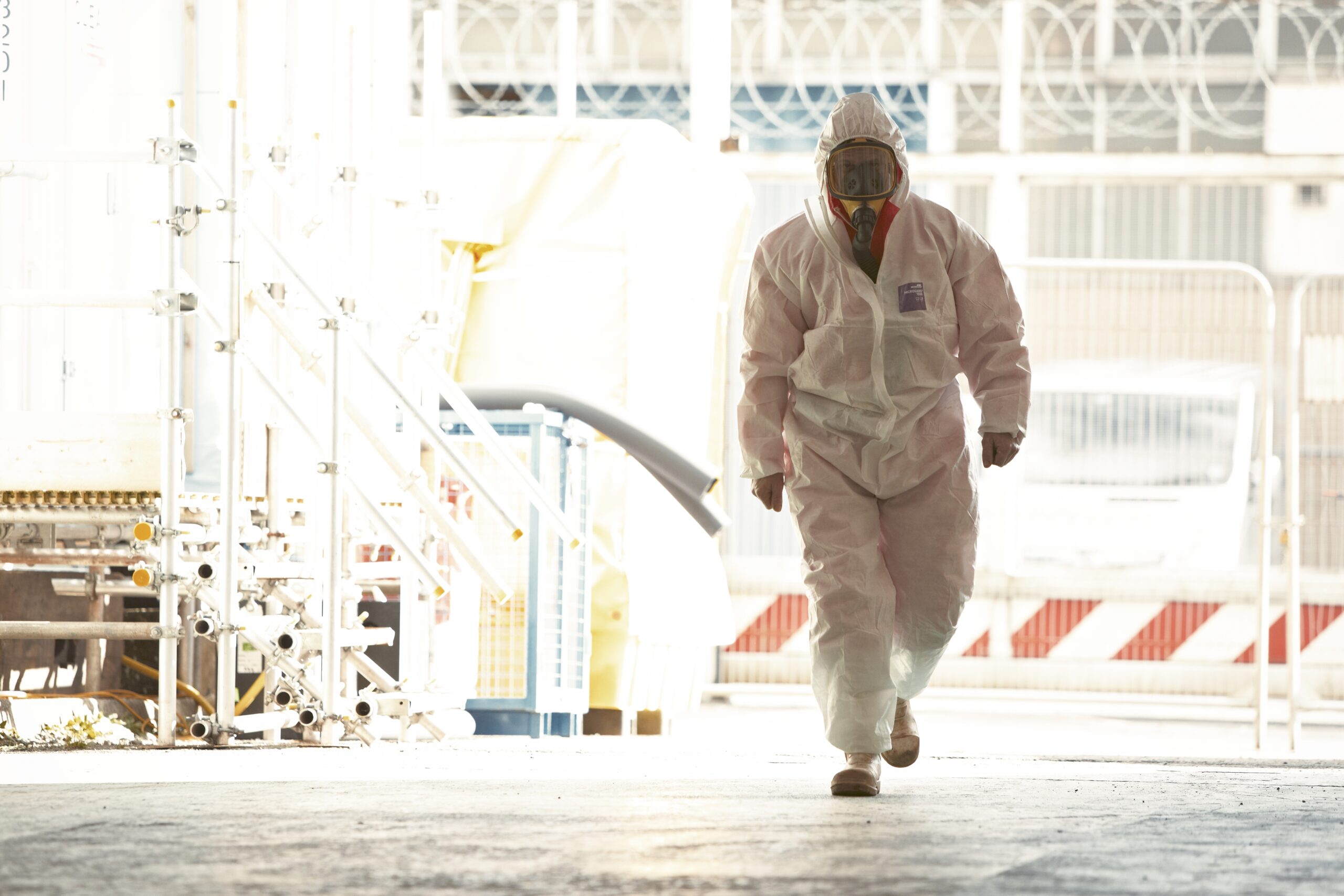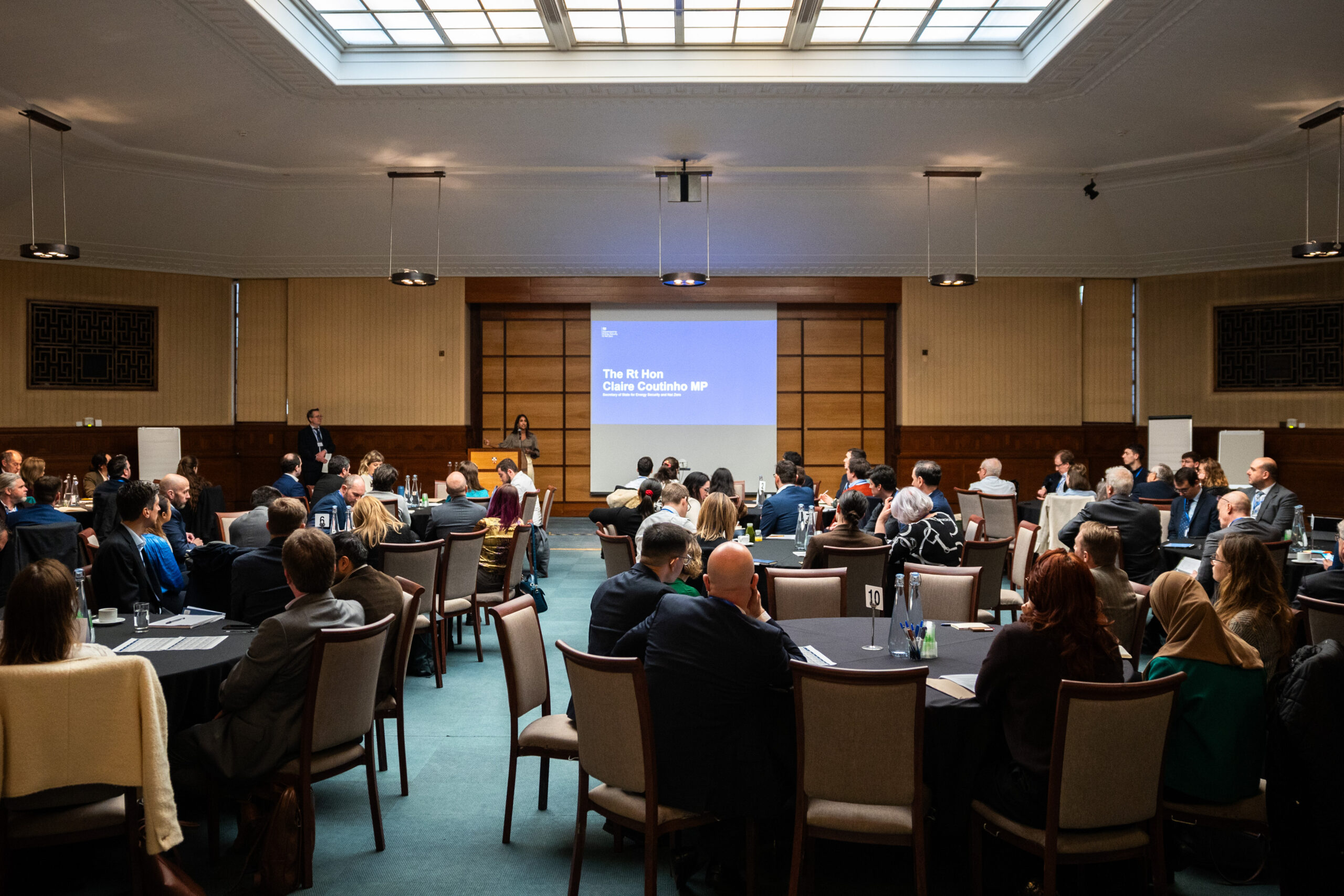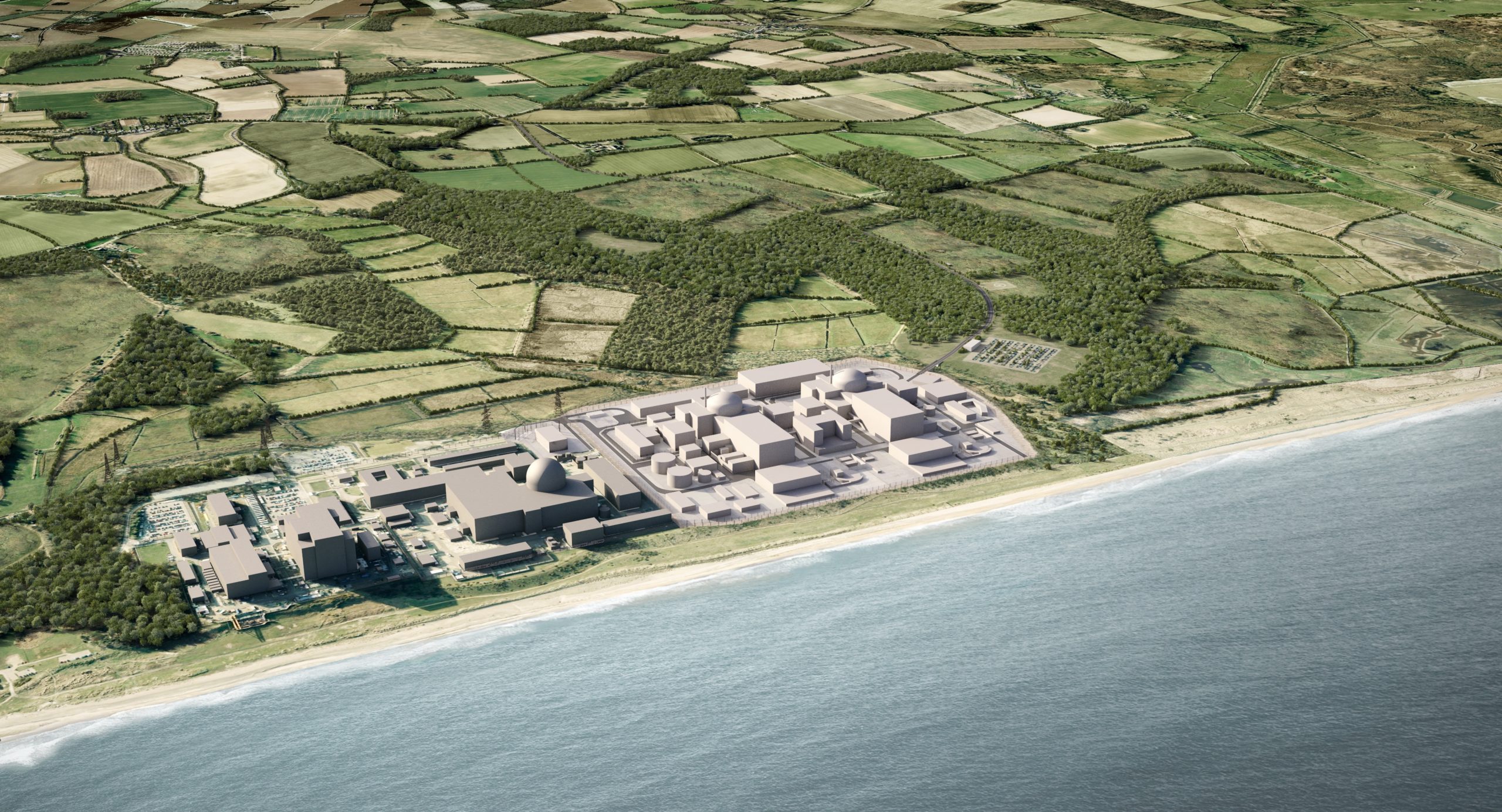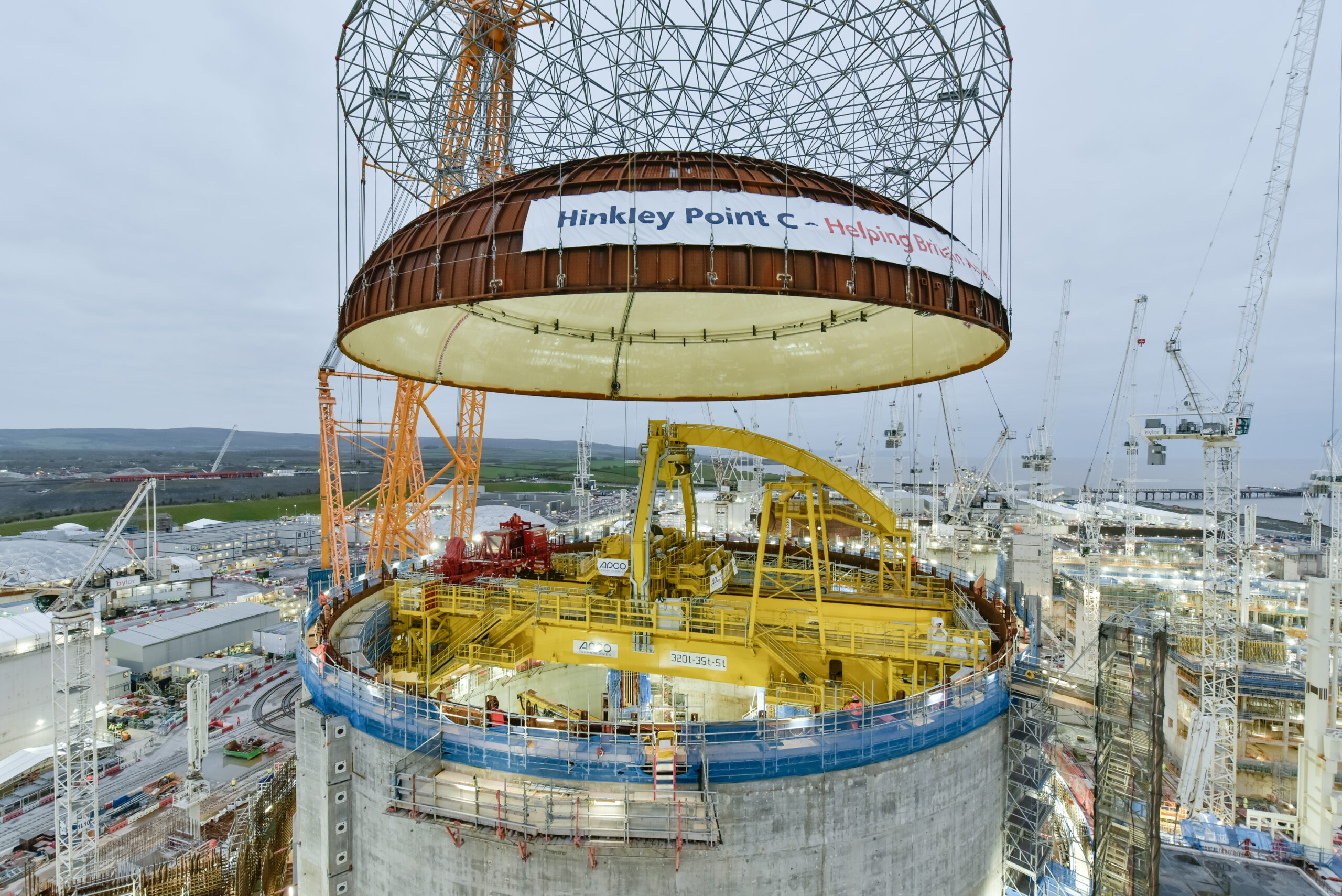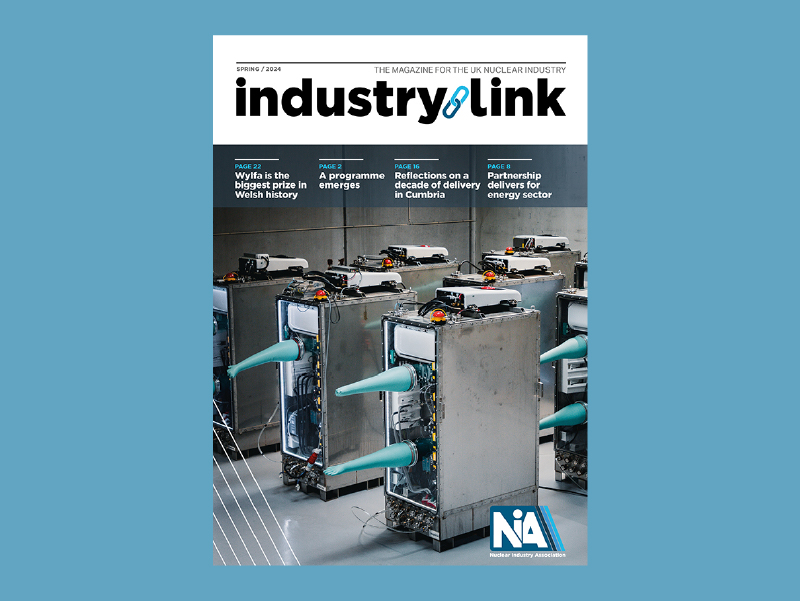Nuclear Industry Association response to the Department for Business, Energy & Industrial Strategy inquiry on the Potential of high temperature gas reactors to support the AMR RD&D programme.
The Nuclear Industry Association (NIA) welcomes the chance to respond to the Department for Business, Energy & Industrial Strategy’s Potential of high temperature gas reactors to support the AMR RD&D programme inquiry.
The NIA is the trade association and representative body for the civil nuclear industry in the UK. We represent more than 200 companies operating across all aspects of the nuclear fuel cycle. This includes the current and prospective operators of nuclear power stations, the international designers, and vendors of nuclear power stations, and those engaged in decommissioning, waste management and nuclear liabilities management.
Some of our members may choose to make their own detailed submissions so therefore this response is a high-level overview of the nuclear sector’s thoughts on this matter.
Do you agree with the government’s preference to explore the potential of high temperature gas reactors (HTGRs) to meet the key objective of the Programme?
The NIA supports the Government’s intent to pursue HTGRs, such as the UK-based U-Battery being developed by Urenco, as a preference after a review of the Nuclear Innovation and Research Office’s (NIRO) Technical Assessment on Advanced Modular Reactors (AMRs).
Whether there is any new, additional evidence on other AMR technologies that could meet the key objective of the Programme?
AMRs are an increasingly popular choice for decarbonisation globally, with development programmes in some of the world’s largest economies, such as Canada, the USA, China, France and the UK.
Their small size and associated lower costs, modularity and flexibility are seen as advantageous to not only producing electricity, but also for process heat and hydrogen. One of the key benefits to AMRs is that location is not such a significantly limiting factor in comparison with the constraints faced by large scale nuclear and renewable developments.
The UK Government has already taken steps to enable the development of AMRs in electricity generation by committing up to £385 million for the Advanced Nuclear Fund in the Government’s 2020 Energy White Paper. However, a long-term plan must be drafted if the UK if to fully realise the potential of HGTRs and become a world-leader in this technology.
Given the Government’s 2030 target of 5GW of hydrogen by 2030, a fleet of HGTRs across the UK will not be able to singularly meet these demands on top of electricity and heat production. The Government should therefore remain open to other AMR technologies when they reach a suitable Technology Readiness Level, as per NIRO’s advice in its technical assessment.
We therefore ask that the Government set out an AMR development timeline, including demonstration of hydrogen production technology and five-year R&D funding settlements to provide stability.
Having a diverse nuclear portfolio will not only contribute to reducing carbon emissions for the UK’s Net Zero targets but will stimulate the economy through national and international investment, provide 100,000s of highly skilled, well-paid jobs, and bolster the UK’s already successful STEM and R&D sectors.
How could the capability of the UK supply chain support the Programme?
The UK civil nuclear supply chain is well-equipped to support the Government AMR RD&D programme. As highlighted in NIRO’s analysis of AMR technologies, the UK has unique expertise in Advanced Gas-cooled Reactors (AGRs) that make the HGTR a particularly suitable first AMR to deploy and scale-up. This knowledge extends to decommissioning of such reactors and therefore there is decreased risk in handling of nuclear waste and potential environmental impacts in the future.
However, given the timelines for AMRs to be deployed – which are unlikely to be commissioned before 2030 – without Government support and financing for large-scale nuclear and Small Modular Reactors today, the supply chain is at significant risk from losing current expertise and losing talent from the next generation of engineers and scientists.
As noted in The Nuclear Roadmap, the amount of new nuclear capacity (33GW as shown in the below figure) required to meet net zero is substantial and building it alongside other major infrastructure programmes will require determination, commitment and planning from both industry and Government.
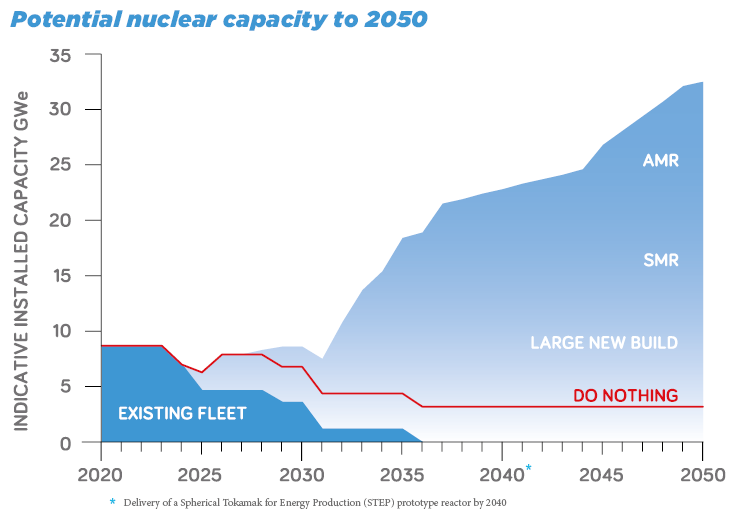
The figure above acts as a stark reminder of the urgent need for progress on new nuclear today due to the existing fleet going offline within the next decade.
AMRs will not be able to produce this amount of electricity alone – even more capacity will be needed to produce nuclear-hydrogen and heat – so it is imperative that Government remove barriers needed for this extensive nuclear new build programme.
We are therefore asking the Government to also:
- Publicly articulate a clear, long-term commitment to new nuclear power, including both large-scale nuclear, SMRs and AMRs
- Work with industry on the publication of a National Policy Statement on small reactors
- Commit to a financing model for large-scale nuclear before the end of the year





